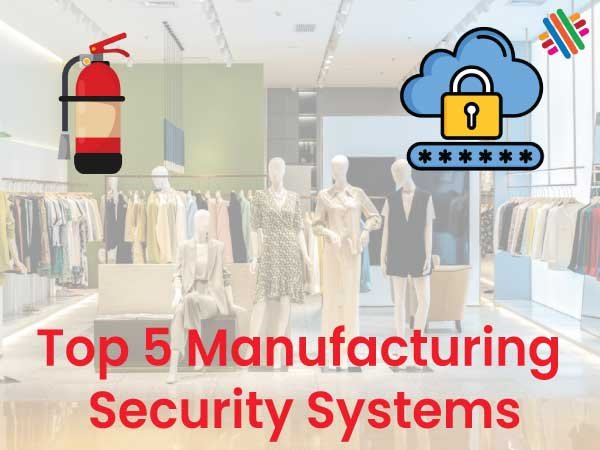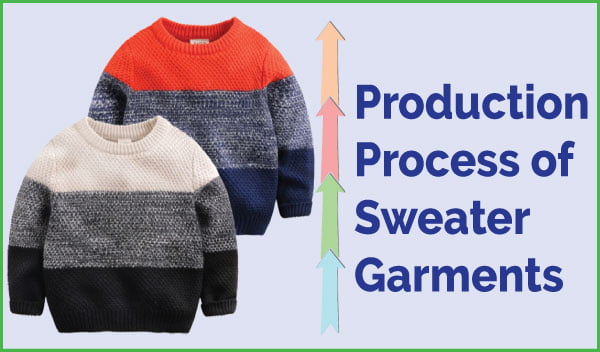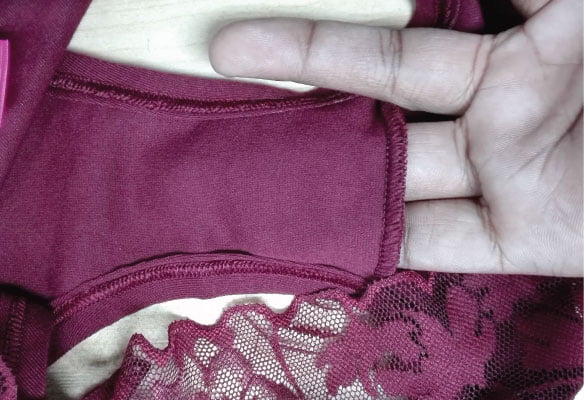Top 5 Manufacturing Security Systems Every Clothing Business Startup Needs
Launching a clothing business is exciting. From designing collections to setting up production, every step brings you closer to building a recognizable fashion brand. But one part of the journey that’s often overlooked by startups is security.
Whether you’re running a small garment workshop or setting up a mid-sized textile factory, the reality is that production environments are vulnerable. Fabric theft, unauthorized access, equipment misuse, and even workplace accidents can disrupt operations, cause costly delays, or damage your reputation.
That’s where a manufacturing security system becomes essential. It’s not just about cameras on the wall – it’s about creating a safer, more reliable environment for your workers, your equipment, and your investment.
Let’s explore the five most important security systems every clothing business startup should consider.

1. Surveillance Systems for Production Floors
Every clothing manufacturer needs eyes on the floor, and the right manufacturing security system makes that possible. Surveillance isn’t just about recording, it’s about keeping track of the entire process, from fabric cutting to stitching to packing. For example, Coram offers solutions that connect with existing IP cameras, giving startups and growing fashion brands a simple dashboard to watch over multiple areas in real time. This helps prevent fabric loss, monitor workflow, and resolve disputes quickly, ensuring smoother operations and better protection for valuable materials.
Why it matters for startups
- Fabrics and finished garments are valuable and easy to move. Without monitoring, losses can go unnoticed.
- Disputes – like damaged goods, missing shipments, or accidents – can be resolved quickly with video evidence.
- For owners who can’t always be on-site, remote viewing keeps you connected to daily operations.
What to look for
- Multi-camera setups that cover entrances, storage rooms, and work areas.
- Clear, high-definition video for both day and night monitoring.
- Systems that let you check feeds from your phone or laptop.
Example scenario
Imagine you’ve just delivered a large fabric roll to your factory. Later, you notice shortages in production. With surveillance cameras, you can review footage to see whether the material was misplaced, wasted, or stolen- saving you guesswork and money.
2. Access Control Systems
In fashion manufacturing, not everyone should have access to every area. Access control systems – like key cards, codes, or biometric scanners – let you decide who can enter where and when.
Why it matters for startups
- Prevents unauthorized entry into stockrooms, fabric storage, or design offices.
- Keeps workers safe by limiting access to high-risk areas, like dyeing or finishing sections.
- Makes it easier to track attendance and manage shifts.
What to look for
- Easy-to-manage systems that don’t require a full IT department to run.
- Options to integrate with time tracking or payroll.
- Flexibility to expand as your factory grows.
Example scenario
A new hire should only access the stitching section, not the inventory room with expensive fabric. An access control system ensures that only authorized staff enter sensitive zones, reducing losses and improving accountability.
3. Fire Safety and Environmental Monitoring
Garment factories deal with fabrics, threads, chemicals, and machines – all of which can create fire hazards. In addition, poor air quality or temperature issues can put workers at risk and damage materials.
Why it matters for startups
- Fires are devastating in textile manufacturing. Even a small spark can spread quickly through fabric rolls.
- Proper environmental monitoring ensures safe working conditions and compliance with local safety regulations.
- Prevention is far cheaper than recovery from fire damage or workplace injuries.
What to look for
- Smoke detectors and fire alarms installed across work areas.
- Fire extinguishers and sprinklers suitable for textile environments.
- Sensors for temperature, humidity, or fumes – especially if your production uses dyes or chemicals.
Example scenario
In a garment factory, a faulty machine motor overheats. A temperature sensor alerts you before it becomes a fire hazard, giving you time to shut down equipment safely.
4. Compliance and Safety Monitoring Systems
Startups often focus on scaling production and forget about compliance. But in textiles, worker safety and labor regulations are non-negotiable. Non-compliance can lead to fines, shutdowns, or reputational damage.
Why it matters for startups
- Workers must follow safety standards (like using protective gear in certain areas).
- Ensures your facility meets legal requirements, making it easier to work with big retailers who require strict compliance checks.
- Creates a culture of safety, which helps retain workers in an industry with high turnover.
What to look for
- Systems that log incidents and create safety reports automatically.
- Tools to document training sessions and compliance audits.
- Integration with your existing security setup for easier management.
Example scenario
A worker enters a chemical storage area without gloves. A safety monitoring system records the violation, providing both a learning opportunity for the worker and proof of compliance for your records.
5. Inventory and Logistics Security Systems
Once clothing leaves your production floor, it still needs protection. Inventory and logistics systems help you track goods from factory to warehouse to retailer.
Why it matters for startups
- Theft during transit is a real risk, especially with high-demand products.
- Mistakes in shipment can damage client relationships.
- Protects your brand reputation by ensuring orders arrive complete and on time.
What to look for
- RFID or barcode tracking integrated into your production system.
- Secure storage with surveillance for finished goods.
- Alerts for unusual activity during loading and shipping.
Example scenario
You send out a shipment of 1,000 finished jackets. At the warehouse, the client claims only 950 arrived. With an inventory security system, you can verify exactly how many jackets were loaded and when, resolving the dispute confidently.
Putting It All Together
For a clothing business startup, security isn’t just about locking the doors at night. It’s about:
- Protecting your investment in fabric, machines, and finished goods.
- Ensuring worker safety in a demanding production environment.
- Building trust with partners and retailers who want assurance you run a reliable, compliant operation.
These five systems – surveillance, access control, fire safety, compliance monitoring, and inventory security – form the foundation of a strong manufacturing security strategy.
Even if your startup can’t implement everything on day one, begin with what’s most critical for your operation. Over time, expand and upgrade as your factory grows.
FAQs
Are these systems expensive for a startup?
Not necessarily. Many providers offer scalable packages, so you can start small – say, with a few cameras and basic access control – and expand as your business grows.
Do I need IT staff to manage manufacturing security systems?
No. Many modern solutions are designed to be user-friendly and cloud-based, so you or a manager can control them from a phone or laptop.
What’s the biggest security risk for garment startups?
Fabric and finished goods theft are common, but non-compliance with safety regulations is equally risky because it can shut down operations.
How do these systems improve productivity?
When workers feel safe and incidents are resolved quickly, production flows more smoothly. Systems that track attendance or manage access also reduce time wasted on manual supervision.
Can security systems really help me win clients?
Yes. Big retailers often require proof of compliance and workplace safety. Having these systems in place makes your startup look more professional and trustworthy.
Conclusion
Starting a clothing business is about more than design and production – it’s about creating a safe, reliable environment where your team can work efficiently and your products stay protected.
By investing in the right manufacturing security systems early – surveillance, access control, fire safety, compliance monitoring, and logistics security – you not only prevent costly problems but also set your brand up for long-term growth.
For startups in the textile and fashion industry, security is not an extra expense – it’s a foundation for success.



